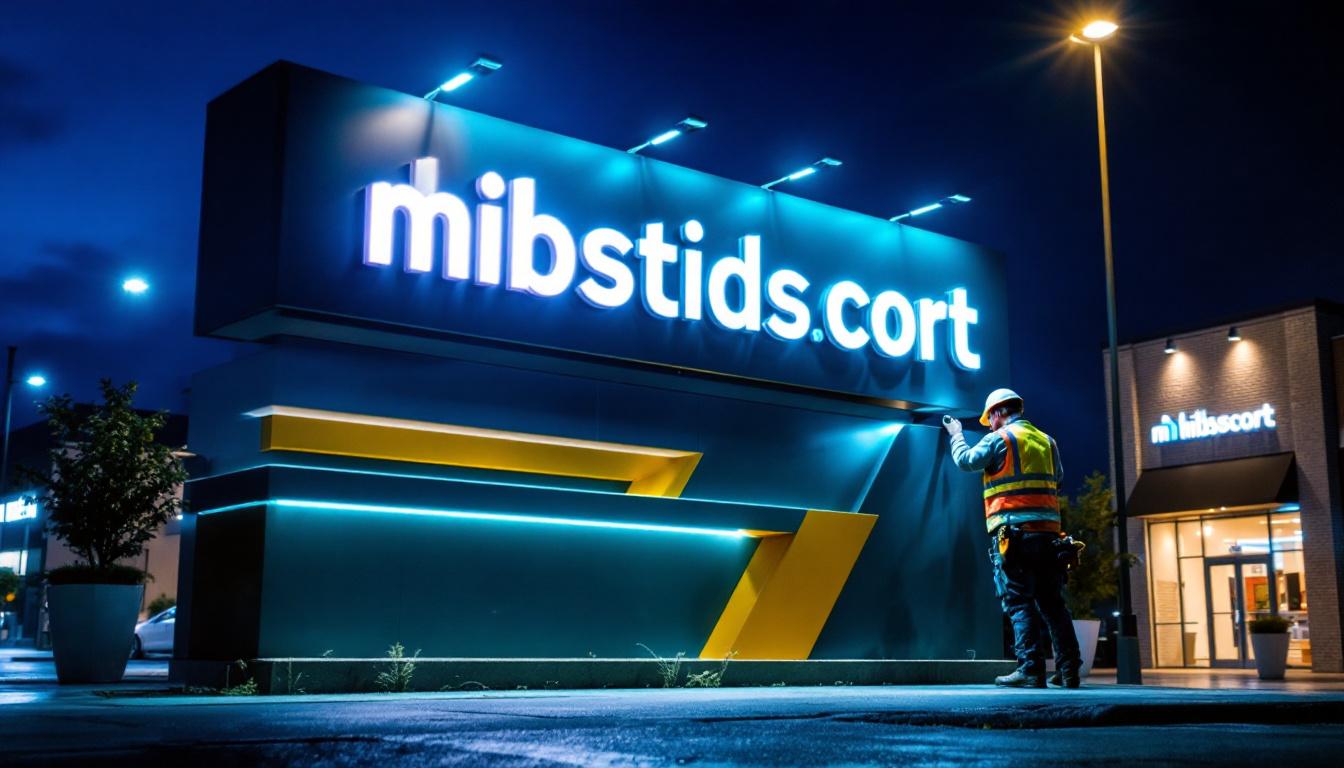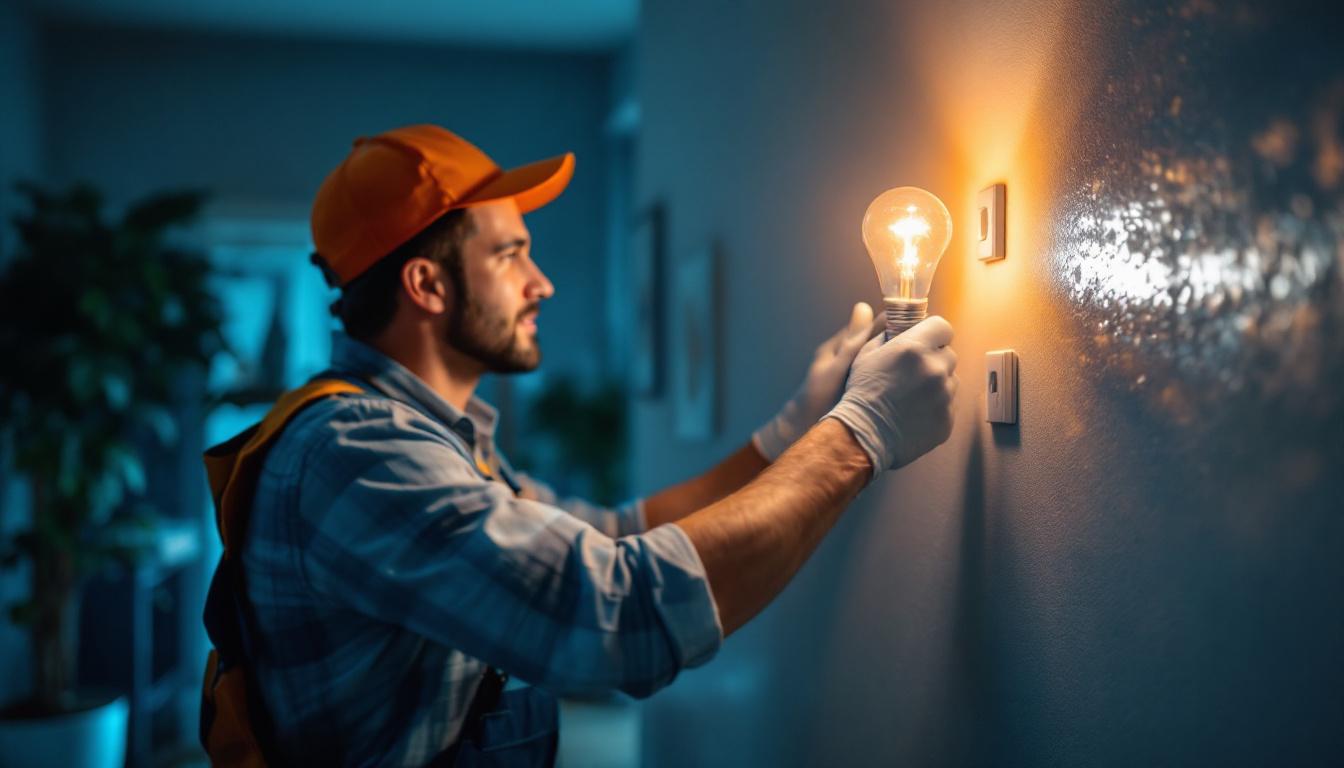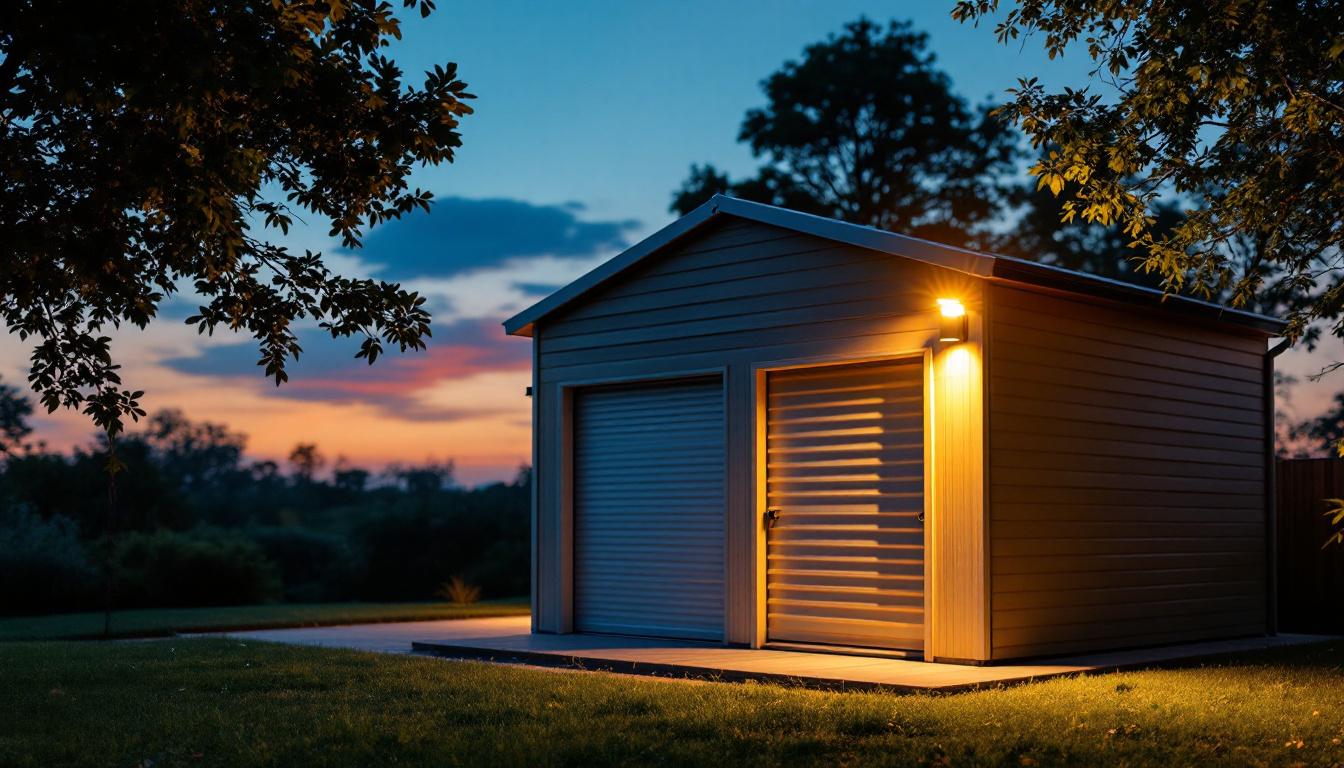
Monument signs serve as a vital component of a business’s branding and visibility strategy. For lighting contractors, understanding the typical dimensions and lighting requirements of these signs is crucial for delivering effective solutions. This article delves into the essential aspects of monument sign dimensions, along with the do’s and don’ts that lighting contractors should consider to ensure optimal performance.
Monument signs are freestanding structures that convey information about a business or organization. They are typically placed at ground level and can be made from various materials, including stone, metal, and wood. The primary purpose of these signs is to enhance visibility and provide clear identification of a location.
These signs come in different shapes and sizes, depending on the specific requirements of the business. Factors such as location, zoning regulations, and design preferences all play a role in determining the dimensions of a monument sign. Additionally, the design can reflect the brand’s identity, incorporating logos and colors that resonate with the target audience, making them not just functional but also a vital part of the branding strategy.
While there is no one-size-fits-all approach to monument sign dimensions, certain standards have emerged based on industry practices. Most monument signs range from 3 to 8 feet in height, with a width that can vary significantly, typically between 4 and 10 feet. The height and width should be proportionate to the surrounding environment to ensure visibility without overwhelming the landscape. Furthermore, the choice of materials can also influence the perceived size of the sign; for example, a stone monument may appear more substantial than a metal sign of the same dimensions due to its mass and texture.
In addition to height and width, the depth of the sign is also a consideration. A typical depth ranges from 1 to 2 feet. This dimension is essential for stability, especially in areas prone to high winds or adverse weather conditions. Moreover, the foundation of the sign must be securely anchored to prevent tipping or damage, which can be a critical factor in ensuring the longevity of the sign.
Several factors influence the size of a monument sign, including the type of business, the location, and local regulations. For instance, a large retail store may require a more substantial sign to attract customers, while a small office may opt for a more modest size. The surrounding landscape also plays a crucial role; for example, a monument sign placed near a busy highway may need to be larger to stand out against the backdrop of fast-moving traffic.
Local zoning laws often dictate the maximum height and size of signs in specific areas. It is crucial for lighting contractors to familiarize themselves with these regulations to ensure compliance and avoid potential fines or the need for redesigns. Additionally, the visibility of the sign can be enhanced through strategic placement and lighting, which can draw attention during both day and night. Businesses may also consider incorporating digital elements into their monument signs, allowing for dynamic content that can be updated frequently, further enhancing their effectiveness in communication and advertising.
Effective lighting is essential for monument signs, as it enhances visibility during nighttime and adverse weather conditions. Proper lighting ensures that the sign remains legible and attractive, contributing to the overall branding strategy of the business. A well-lit monument sign not only draws attention but also instills a sense of professionalism and trustworthiness in potential customers. In a world where first impressions matter, the right lighting can make a significant difference in how a business is perceived.
When planning the lighting for monument signs, contractors must consider the type of lighting, the placement of fixtures, and the desired effect. Different lighting techniques can create various atmospheres and highlight specific features of the sign. For instance, uplighting can create a dramatic effect that highlights the sign’s height, while downlighting can provide a softer glow that enhances readability. The interplay of light and shadow can also add depth and dimension, making the sign more visually appealing and inviting.
There are several lighting options available for monument signs, each offering unique benefits. LED lighting is one of the most popular choices due to its energy efficiency, longevity, and versatility. LEDs can be used for backlighting, halo lighting, or direct illumination, depending on the desired effect. Additionally, LED technology has advanced significantly, allowing for color-changing options that can adapt to seasonal themes or special events, further enhancing the sign’s appeal.
Other options include fluorescent and incandescent lighting, though these are less common due to their shorter lifespan and higher energy consumption. Fluorescent lights may provide a bright, even illumination but can sometimes create a harsh light that is not ideal for all settings. Incandescent bulbs, while offering a warm glow, are less energy-efficient and have a shorter operational life. Contractors should assess the specific needs of the sign and the business to determine the most suitable lighting solution, taking into account factors such as maintenance, energy costs, and aesthetic preferences.
The positioning of lighting fixtures is critical for achieving the desired illumination effect. Fixtures should be placed at an appropriate distance from the sign to avoid harsh shadows or glare. Additionally, the angle of the lights can significantly impact how the sign is perceived. A well-placed light can create a welcoming atmosphere, while poorly positioned lights may detract from the sign’s visibility. For example, lighting directed at a steep angle may wash out colors and details, while a more horizontal approach can enhance contrast and clarity.
It is also essential to consider the surrounding environment when positioning lights. Nearby trees, buildings, or other structures can obstruct light and affect the overall visibility of the sign. Conducting a site assessment before installation can help identify potential obstacles and inform the best lighting strategy. Furthermore, seasonal changes, such as the growth of foliage in spring and summer, can alter the effectiveness of the lighting setup. By planning for these variables, contractors can ensure that the monument sign remains a prominent feature year-round, effectively communicating the business’s message to passersby at all times.
To ensure the successful installation and maintenance of monument signs, lighting contractors should adhere to several best practices. These do’s can enhance the effectiveness of the sign and improve customer satisfaction.
Before beginning any project, it is crucial to assess the environment where the monument sign will be installed. This assessment should include evaluating the surrounding landscape, existing lighting conditions, and potential obstructions. Understanding these factors will help in designing an effective lighting plan that enhances visibility and aesthetics.
Additionally, contractors should consider the local climate, as this can impact the choice of materials and lighting fixtures. For example, areas prone to heavy snowfall may require different considerations than regions with high humidity.
Compliance with local zoning laws and regulations is essential for any signage project. Contractors should familiarize themselves with the specific rules governing monument signs in the area, including height restrictions, size limitations, and lighting requirements.
Engaging with local authorities early in the project can help streamline the approval process and avoid potential setbacks. This proactive approach not only ensures compliance but also builds a positive relationship with local officials.
Investing in high-quality materials is vital for the longevity and effectiveness of monument signs. Durable materials can withstand the elements and reduce maintenance costs over time. When selecting materials, contractors should consider factors such as weather resistance, aesthetics, and compatibility with lighting fixtures.
Additionally, using quality lighting fixtures ensures optimal performance and reduces the likelihood of frequent replacements. This investment can lead to satisfied clients and a strong reputation for the contractor.
While there are many best practices to follow, there are also common pitfalls that lighting contractors should avoid. These don’ts can help prevent costly mistakes and ensure a successful project.
Maintenance is a critical aspect of any signage project. Contractors should not overlook the importance of regular inspections and upkeep of both the sign and the lighting fixtures. Neglecting maintenance can lead to diminished visibility and a negative impression on potential customers.
Establishing a maintenance schedule can help ensure that the sign remains in optimal condition. This includes checking for burnt-out bulbs, cleaning the sign surface, and assessing the structural integrity of the monument.
While contractors bring expertise to the project, it is essential to consider the preferences and vision of the customer. Ignoring their input can lead to dissatisfaction and potential rework. Engaging with clients throughout the design and installation process fosters collaboration and ensures that the final product aligns with their expectations.
Additionally, understanding the brand identity of the business can guide decisions regarding colors, materials, and lighting techniques. A cohesive approach will enhance the effectiveness of the monument sign in attracting customers.
Before finalizing the installation, it is crucial to test the lighting and overall visibility of the monument sign. Skipping this step can result in unforeseen issues that may require costly adjustments later. Testing should include evaluating the sign’s visibility from various angles and distances, as well as assessing the effectiveness of the lighting under different conditions.
Conducting thorough testing not only ensures that the sign meets the desired standards but also provides peace of mind for both the contractor and the client.
Understanding the typical dimensions and lighting requirements for monument signs is essential for lighting contractors aiming to deliver high-quality, effective solutions. By adhering to best practices and avoiding common pitfalls, contractors can ensure that their projects not only meet regulatory standards but also enhance the visibility and branding of their clients’ businesses.
With careful planning, attention to detail, and a commitment to quality, lighting contractors can create monument signs that stand out and effectively communicate their clients’ messages. The right approach to dimensions and lighting can make a significant difference in the success of a monument sign project.
Ready to elevate your monument sign projects with superior lighting solutions? At LumenWholesale, we provide lighting contractors with the highest quality, spec-grade lighting products at unbeatable wholesale prices. Say goodbye to local distributor markups and hello to our extensive selection that meets the most rigorous industry standards. Plus, enjoy the convenience of bulk buying with free shipping, ensuring you get premium lighting at the best value — without hidden fees. Don’t compromise on quality or cost; choose LumenWholesale for a seamless blend of affordability and reliability. Wholesale Lighting at the Best Value is just a click away.

Discover why switch dimmable light bulbs are essential for lighting contractors, offering energy savings, enhanced control, and increased client satisfaction—boost your expertise today!.

Discover how lighting contractors can enhance their projects with solar lights for signs.

Discover how Light Bulbs Unlimited & Lighting Solutions can transform your space with innovative lighting strategies.

Illuminate your projects with our comprehensive guide on storage shed solar lights, tailored specifically for lighting contractors.